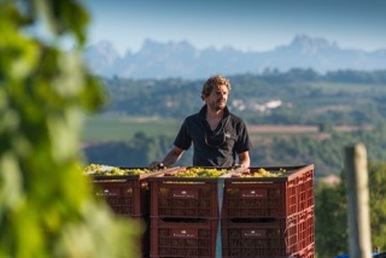
by Patrick Ogle
The land and vineyards of Raventós Estate have been in the Raventós family since five years after Columbus sailed for the Americas. They have been making wine on this land for over 500 years and first made sparkling wine in 1872 but the latest member of the clan to run the estate, Pepe Raventós, doesn't place as much emphasis on history as you might think.
"Having this long heritage doesn’t mean much. I think every generation has to start from scratch, and has to follow its own dream—not trying to do things as they have been done forever. But of course past matters." he says.
The people went before lay groundwork but the interpretation in the now is up to the new generation. What is most important is the land, the terroir and making something authentic.
"When I was a kid I used to spend the summers and harvest time in the family estate. For me tradition and modernity is Conca del Riu Anoia this means doing not the best wines but the most honest thanks to a soil, a climate and a valley," says Raventós. "We keep doing the same formula that my antecessor Josep Raventós Fatjó did in 1872. He was the creator of formula that nowadays is used for Cava. He understood the great potential of the grapes, the mineral structure of our oldest soils and, most importantly, that to become world class you have to be authentic. And we have the same dream: to create quality sparkling wines."
Raventos i Blanc produces a number of wonderful sparkling wines including; Manuel Raventós Negra, Textures de Pedra, De La Finca. De Nit and L'Hereu Blanc de Blancs.
The land and vineyards of Raventós Estate have been in the Raventós family since five years after Columbus sailed for the Americas. They have been making wine on this land for over 500 years and first made sparkling wine in 1872 but the latest member of the clan to run the estate, Pepe Raventós, doesn't place as much emphasis on history as you might think.
"Having this long heritage doesn’t mean much. I think every generation has to start from scratch, and has to follow its own dream—not trying to do things as they have been done forever. But of course past matters." he says.
The people went before lay groundwork but the interpretation in the now is up to the new generation. What is most important is the land, the terroir and making something authentic.
"When I was a kid I used to spend the summers and harvest time in the family estate. For me tradition and modernity is Conca del Riu Anoia this means doing not the best wines but the most honest thanks to a soil, a climate and a valley," says Raventós. "We keep doing the same formula that my antecessor Josep Raventós Fatjó did in 1872. He was the creator of formula that nowadays is used for Cava. He understood the great potential of the grapes, the mineral structure of our oldest soils and, most importantly, that to become world class you have to be authentic. And we have the same dream: to create quality sparkling wines."
Raventos i Blanc produces a number of wonderful sparkling wines including; Manuel Raventós Negra, Textures de Pedra, De La Finca. De Nit and L'Hereu Blanc de Blancs.
The Spanish sparkling wine most Americans are familiar with is Cava but Conca del Riu Anoia is no longer a part of the Cava D.O. (this is the Spanish version of the French A.O.C., Italian D.O.C and American A.V.A.). Conca del Riu Anoia is now its own D.O. and has much more rigorous standards than Cava. Ask yourself, as a consumer, what you think of Cava compared to Champagne? Are they of the same quality? Any objective wine-lover will answer with a resounding "No."
This was a big step for a descendant of the man who created Cava but Raventos felt that they could get something more than a mass produced sparkler from their land.
"Conca was born because I want this region to be known in the rest of the world. I want that sparkling wines from Conca talk about of prestigious and viticulture," he says. "We went out from DO Cava in 2012 and since then we’ve been working for positioning Raventós at the same level of the grower champagnes. It has been a communication work to position the brand. We are not any more at the same level of Cava that has an image of cheap and affordable."
Grower champagnes are those that are made by the actual growers of the grapes. Many large production champagnes buy grapes and may not even own any actual vineyards. Grower Champagnes are usually thought to be of higher quality than those that are mass produced (you can also generate fun arguments by making this statement around some people).
When Conca hived off from Cava the world took note.
"There are a lot of people that has noticed this movement. The journalists and influencers have supported and praised it. For example, we were featured in The Wall Street Journal or New York Times talking about our decision," says Raventós. "The restaurant menus also received and welcomed this new DO and they did a differentiation between the different zones: Champagne /
Conca Del Riu Anoia / Cava. The same occurred in specialty wine stores."
Other producers left as well and some who remained were unhappy. One called those leaving “cowardly.” Although there was no explanation of how leaving a known brand for the unknown could be that.
This was a big step for a descendant of the man who created Cava but Raventos felt that they could get something more than a mass produced sparkler from their land.
"Conca was born because I want this region to be known in the rest of the world. I want that sparkling wines from Conca talk about of prestigious and viticulture," he says. "We went out from DO Cava in 2012 and since then we’ve been working for positioning Raventós at the same level of the grower champagnes. It has been a communication work to position the brand. We are not any more at the same level of Cava that has an image of cheap and affordable."
Grower champagnes are those that are made by the actual growers of the grapes. Many large production champagnes buy grapes and may not even own any actual vineyards. Grower Champagnes are usually thought to be of higher quality than those that are mass produced (you can also generate fun arguments by making this statement around some people).
When Conca hived off from Cava the world took note.
"There are a lot of people that has noticed this movement. The journalists and influencers have supported and praised it. For example, we were featured in The Wall Street Journal or New York Times talking about our decision," says Raventós. "The restaurant menus also received and welcomed this new DO and they did a differentiation between the different zones: Champagne /
Conca Del Riu Anoia / Cava. The same occurred in specialty wine stores."
Other producers left as well and some who remained were unhappy. One called those leaving “cowardly.” Although there was no explanation of how leaving a known brand for the unknown could be that.
Raventós says this new D.O. has impacted Cava itself and small steps are being taken in Cava and Penedès to improve quality. Cava has a new sub classification, Cava de Paraje Calificado. He is a little skeptical about these initial moves.
"For us they are absolutely tiny and confusing." he says."... I don’t think the New sub classification in the D.O. Cava, Cava de Paraje Calificado, will really make a difference to Cava’s image."
He says that while Conca is about a concrete, quite specific area the new cava classification is about a wine made in a single plot but from different regions. There are other differences but ultimately the new Cava classification is about method rather than terroir.
"For us it’s not enough and we go much further." he says. (see table below)
Raventós also notes that other wineries in other regions, Artadi in Rioja, for instance, have become dissatisfied with their D.O. and have left.
"Overall in Spain is having a pretty movement in favor of the winemaker to protect and recover the Spanish vineyard forcing the D.O.’s to change their regulations." he says.
"For us they are absolutely tiny and confusing." he says."... I don’t think the New sub classification in the D.O. Cava, Cava de Paraje Calificado, will really make a difference to Cava’s image."
He says that while Conca is about a concrete, quite specific area the new cava classification is about a wine made in a single plot but from different regions. There are other differences but ultimately the new Cava classification is about method rather than terroir.
"For us it’s not enough and we go much further." he says. (see table below)
Raventós also notes that other wineries in other regions, Artadi in Rioja, for instance, have become dissatisfied with their D.O. and have left.
"Overall in Spain is having a pretty movement in favor of the winemaker to protect and recover the Spanish vineyard forcing the D.O.’s to change their regulations." he says.
How specifically has the new Conca D.O. improved Raventós wines?
"To achieve this new standards, we did a lot of work before that. First of all, we did some studies of the soil.These studies were conducted by Olivier Tregoat (an expert on Bordeaux soils) and Lluís Cabrera (professor of geology at the University of Barcelona) and they showed that the soils on the Raventós i Blanc estate on the river terraces date back to the oldest period of the Penedès depression - 16 million years ago - and are home to a large number of marine
fossils," he says. "The main characteristic of the soils is the deep galera - layers of marine fossil sediments encrusted in the clay and loam with a calcareous base."
They removed foreign varietals such as pinot noir, chardonnay and cabernet sauvignon and planted local grapes. This is the opposite of what you are seeing in many parts of the world. The so-called international varietals are replacing indigenous varietals virtually everywhere. There are a number of noted wine writers who champion the destruction of indigenous grapes with the "superior" international varietals. Raventós and Conca also stopped making some base wines that were not a minimum of 80 percent estate grown.
"Since we took the decision there hasn’t been a change in the spirit because in some way we converted our estate in the same that my intercessors used to work. With Conca I want to reflect the same values of innovation, passion for this area of Penedès and conviction to our (traditions) that all my family had in the past," he says. "For me it wasn’t something radical but something natural. Honestly, this decision has made us take difficult decisions, being very strict with the work we do, and strongly respectful with our land, nature and forms of viticulture."
One difference between Cava and Conca is that the latter uses only native grapes--some of which are not used in Cava.
"To make wines that would most faithfully express our terroir, we decided only to use native grape varieties that historically adapted well to our soils," says Raventós. "As part of our venture to convert our estate from organic to bio=dynamic, we decided to root up foreign varieties - the chardonnay vines in the La Plana area - and re-graft in our youngest plots with the aim of growing 100 percent native grape varieties. We believe that best varieties for sparkling wine in our zone of macabeu, xarel.lo, sumoll and bastard negre."
But the grapes--xarel-lo, parellada and macabeo--what makes them the right combination for great sparkling wine?
"These three grapes make a good sparkling wine as they are the three varieties used by my ancestor when he created the formula. The xarel-lo gives complexity, aging, volume and structure," he says. "It´s the variety that adapts best to the Mediterranean climate. Macabeo grape gives elegance, balance, and acidity and parellada grape softness and a floral touch."
He declines to make any direct comparison with Champagne or its grapes.
"We cannot compare the grapes of our area as they are different ones. Ours adapt better to Mediterranean climate," says Raventos. "They are two different things, neither better nor worse. They have different flavors, different styles."
Some of the lesser known grapes Raventós i Blanc use include sumoll, bastard negre and red xarel-lo
"For our blanc de noirs, Textures de Pedra, we use three local red varieties sumoll, bastard negre and red xarel-lo. Sumoll it’s not used in Cava as it’s not allowed. It gives the best acidity to the wines. Bastard negre gives strength and dynamism as well as density and texture," he says. "For so many years we thought we had monastrell in the estate, but after analyzing its DNA we realized it was bastard negre. It’s not trousseau/ bastardo nero in Galicia and Portugal. It’s the same as bastardo nero in Sardinia, morastel in France and graciano in Rioja. Red xarel-lo is more rustic, gives structure and more maturation but maintains good the acidity."
"To achieve this new standards, we did a lot of work before that. First of all, we did some studies of the soil.These studies were conducted by Olivier Tregoat (an expert on Bordeaux soils) and Lluís Cabrera (professor of geology at the University of Barcelona) and they showed that the soils on the Raventós i Blanc estate on the river terraces date back to the oldest period of the Penedès depression - 16 million years ago - and are home to a large number of marine
fossils," he says. "The main characteristic of the soils is the deep galera - layers of marine fossil sediments encrusted in the clay and loam with a calcareous base."
They removed foreign varietals such as pinot noir, chardonnay and cabernet sauvignon and planted local grapes. This is the opposite of what you are seeing in many parts of the world. The so-called international varietals are replacing indigenous varietals virtually everywhere. There are a number of noted wine writers who champion the destruction of indigenous grapes with the "superior" international varietals. Raventós and Conca also stopped making some base wines that were not a minimum of 80 percent estate grown.
"Since we took the decision there hasn’t been a change in the spirit because in some way we converted our estate in the same that my intercessors used to work. With Conca I want to reflect the same values of innovation, passion for this area of Penedès and conviction to our (traditions) that all my family had in the past," he says. "For me it wasn’t something radical but something natural. Honestly, this decision has made us take difficult decisions, being very strict with the work we do, and strongly respectful with our land, nature and forms of viticulture."
One difference between Cava and Conca is that the latter uses only native grapes--some of which are not used in Cava.
"To make wines that would most faithfully express our terroir, we decided only to use native grape varieties that historically adapted well to our soils," says Raventós. "As part of our venture to convert our estate from organic to bio=dynamic, we decided to root up foreign varieties - the chardonnay vines in the La Plana area - and re-graft in our youngest plots with the aim of growing 100 percent native grape varieties. We believe that best varieties for sparkling wine in our zone of macabeu, xarel.lo, sumoll and bastard negre."
But the grapes--xarel-lo, parellada and macabeo--what makes them the right combination for great sparkling wine?
"These three grapes make a good sparkling wine as they are the three varieties used by my ancestor when he created the formula. The xarel-lo gives complexity, aging, volume and structure," he says. "It´s the variety that adapts best to the Mediterranean climate. Macabeo grape gives elegance, balance, and acidity and parellada grape softness and a floral touch."
He declines to make any direct comparison with Champagne or its grapes.
"We cannot compare the grapes of our area as they are different ones. Ours adapt better to Mediterranean climate," says Raventos. "They are two different things, neither better nor worse. They have different flavors, different styles."
Some of the lesser known grapes Raventós i Blanc use include sumoll, bastard negre and red xarel-lo
"For our blanc de noirs, Textures de Pedra, we use three local red varieties sumoll, bastard negre and red xarel-lo. Sumoll it’s not used in Cava as it’s not allowed. It gives the best acidity to the wines. Bastard negre gives strength and dynamism as well as density and texture," he says. "For so many years we thought we had monastrell in the estate, but after analyzing its DNA we realized it was bastard negre. It’s not trousseau/ bastardo nero in Galicia and Portugal. It’s the same as bastardo nero in Sardinia, morastel in France and graciano in Rioja. Red xarel-lo is more rustic, gives structure and more maturation but maintains good the acidity."
Raventós i blanc make more than just sparkling wines. They make lovely still wines with one of the grapes used to make their sparklers, xarel-lo. Two of these wines are Silencis and Extrem.
"They are our two natural non filtered wines the youngest ones we produce in Raventós i Blanc. They have a silky character but they are bodied wine. For those who haven’t try them I would tell them; "If you want to experience with something new and very mineral, try them”," he sas. "Xarel-lo is a white variety and the most expressive grape from El Penedès. Bright, unique, it is the essence of our territory. It has an excellent adaptation to the soil and climate of the area."
They even tried a red wine made from non-native grapes (cabernet sauvignon, syrah and monastrell). Raventós says it was a trend in the 1980s and that the two non-native varietals do not work as well as local ones. They still grown monastrell (aka mourvedre) and even use it in a sparkling wine but the cab and syrah are gone.
"We don’t think it’s a good choice working with grapes that don’t adapt to your climate. Everybody makes mistakes." he says.
He says his plans for the winery are simple. It is his objective to encourage his team to have a clear purpose and a single idea--prestige.
Raventós has just moved back to Sant Sadurni with all of his family to live in the farmhouse his family has occupied for the past 21 generations.
After all history does some allure.
"They are our two natural non filtered wines the youngest ones we produce in Raventós i Blanc. They have a silky character but they are bodied wine. For those who haven’t try them I would tell them; "If you want to experience with something new and very mineral, try them”," he sas. "Xarel-lo is a white variety and the most expressive grape from El Penedès. Bright, unique, it is the essence of our territory. It has an excellent adaptation to the soil and climate of the area."
They even tried a red wine made from non-native grapes (cabernet sauvignon, syrah and monastrell). Raventós says it was a trend in the 1980s and that the two non-native varietals do not work as well as local ones. They still grown monastrell (aka mourvedre) and even use it in a sparkling wine but the cab and syrah are gone.
"We don’t think it’s a good choice working with grapes that don’t adapt to your climate. Everybody makes mistakes." he says.
He says his plans for the winery are simple. It is his objective to encourage his team to have a clear purpose and a single idea--prestige.
Raventós has just moved back to Sant Sadurni with all of his family to live in the farmhouse his family has occupied for the past 21 generations.
After all history does some allure.
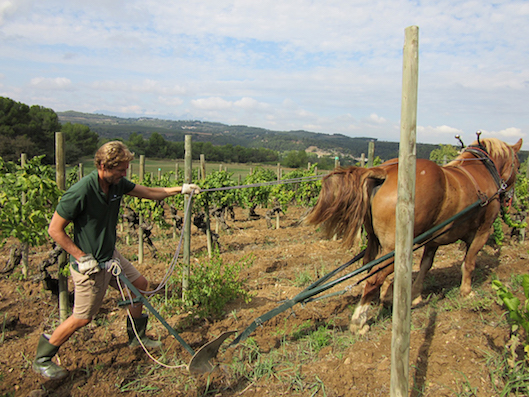
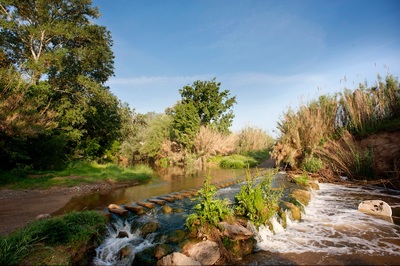
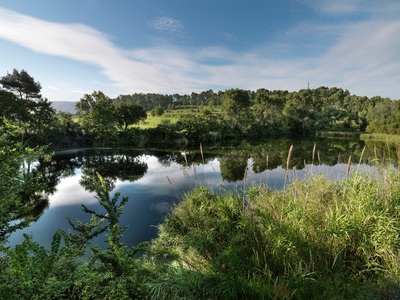
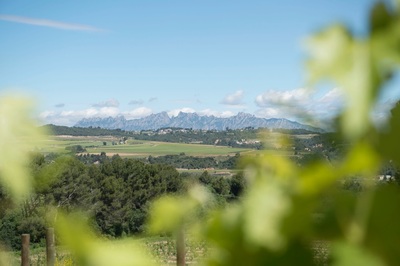
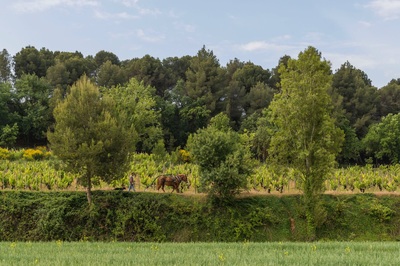
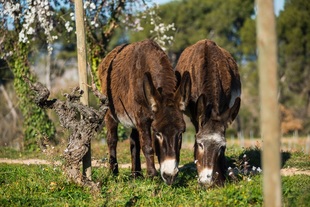
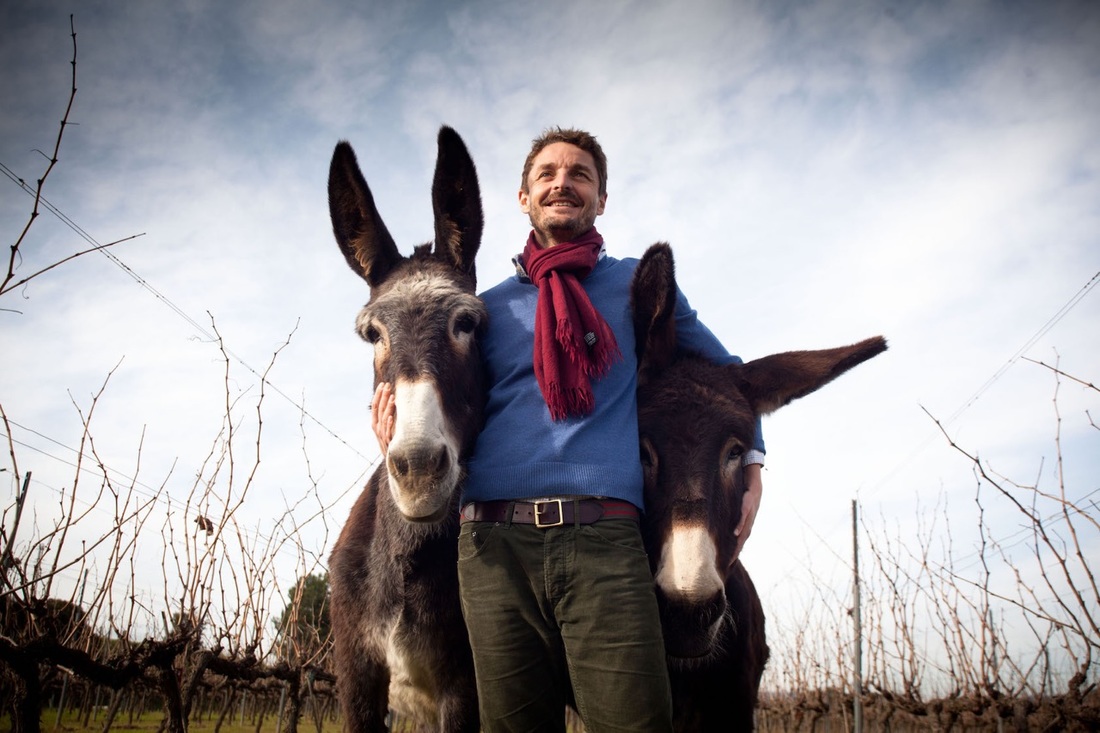

 RSS Feed
RSS Feed